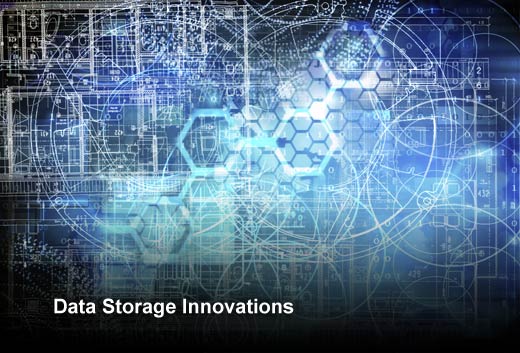The global storage software market is rapidly expanding. According to industry analyst Markets and Markets, the global storage software market is expected to grow from $15.11 billion in 2014 to $23.33 billion by 2019. The firm identifies North America and Europe as having the highest adoption rates, with storage solutions increasingly playing a vital role across various industry verticals.
With market pressures on storage providers escalating, the entire ecosystem has been in need of a shake up. True improvement began in 2014, a year that proved to be significant for products, technologies and architectures. The coming months will see even further acceleration in modernization.
In this slideshow, Scott Davis, chief technology officer of Infinio, a market leader in storage acceleration for virtualized data centers, presents the innovations of the new storage landscape and what these realities mean for industry promise.
Data Storage Innovations
Click through for five innovations that are changing the data storage landscape in 2015, as identified by Scott Davis, chief technology officer of Infinio.
Internet of Things (IoT), Multimedia and Big Data
The ever-growing amount of content is driving the need for more capacity, while real-time analytics and mobility are driving the need for more performance. Historically, cost-effective capacity solutions and high-speed, low-latency performance solutions have been at odds. Organizations need an economical approach to managing the capacity requirements of the data deluge while also achieving the optimal performance required by their emerging applications.
Decoupling Capacity and Performance
There is an emerging model of purchasing and deploying storage performance separately from capacity in order to reconcile the competing demands between the layers. This decoupling is not just a futuristic architecture; enterprises are adopting it today because it is less intrusive and more flexible than alternatives, and it can be implemented in a way that requires no new hardware or operational changes. All of this enables organizations to keep the otherwise skyrocketing costs of capacity and performance under control.
Flash Devices and SMR Drives
While flash is undoubtedly innovative, it will not be everything to everyone. While all-flash arrays will continue to flourish, spinning media is not disappearing as shingled magnetic recording (SMR) drives emerge, delivering much greater capacity value. It is unlikely that we are going to see an all-flash future, as spinning/shingled SMR drives become a more cost-effective way to support the upsurge of unstructured data and the needs behind Big Data and object storage.
Snapshots Versus Traditional Backup
Before long, snapshots stored on cloud-based object storage will replace traditional corporate backups. This is a result of a quiet transformation over the past few years. The benefits behind this transition include operationally cheaper backups that have smaller downtime windows, while enabling faster and easier recovery when needed.
NVDIMM
NVDIMM refers to non-volatile, persistent storage technologies that connect directly to the memory bus or DIMM slot on a motherboard, instead of connecting like an I/O device via higher latency PCI-e. At the onset, NVDIMM will be backed by flash, and it will be fairly expensive for mainstream usage. The next step? Interfacing directly to a memory DIMM slot, with the memory interface being used to complete writes in fewer than 10 microseconds, an order of magnitude faster than current flash approaches.








